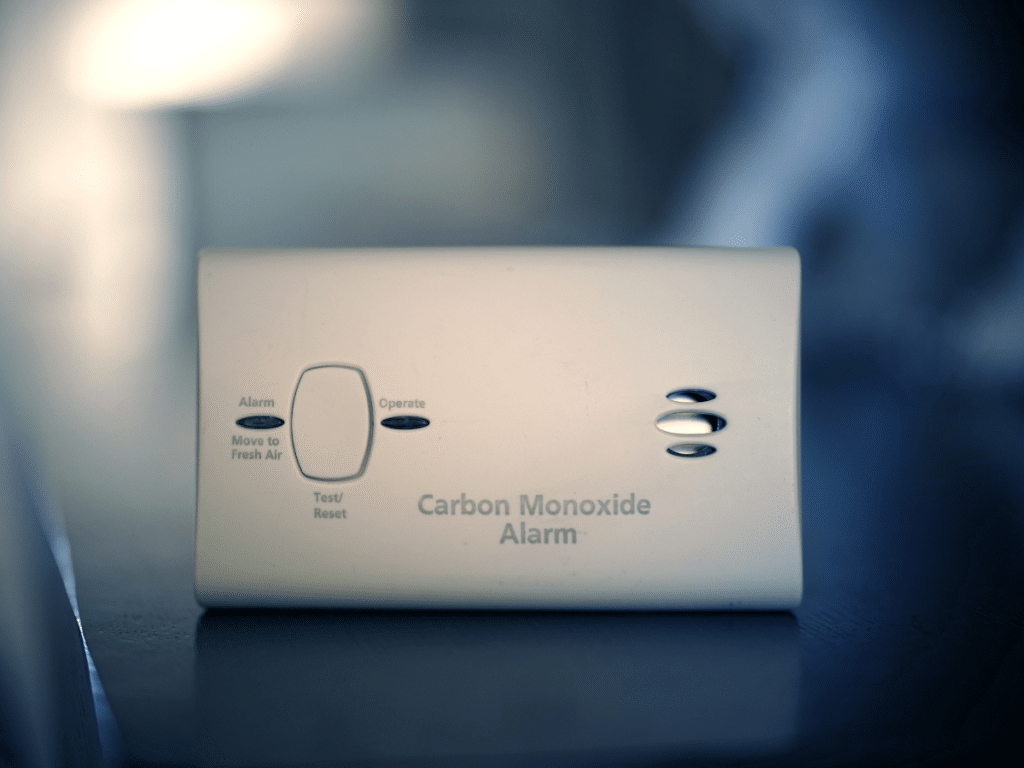We all know establishing a safe home for yourself and your family is a top priority. While many of us are aware of the usual hazards, there’s a silent, invisible threat that often goes unnoticed – Carbon Monoxide (CO). With the central role that HVAC systems play in our homes, understanding and addressing the potential risks associated with CO is vital.
Let’s dive into the details to get a proper understanding of what to look out for and how to prevent this extremely dangerous hazard.

Understanding Carbon Monoxide: The Stealthy Peril
Carbon Monoxide is an odorless, colorless gas that’s produced when fuels like gas, oil, coal, and wood don’t burn completely.
Common household appliances, including HVAC systems and water heaters, can produce CO if they’re malfunctioning or improperly installed.
In confined spaces like homes, even a small amount of this gas can be deadly, making it essential to be aware of its sources and dangers.
How Much Carbon Monoxide is Dangerous?
The risk posed by carbon monoxide (CO) largely depends on its concentration in the air and the duration of exposure. According to the World Health Organization, even low levels can be harmful if sustained. For instance, 9 parts per million (ppm) for 8 hours is the maximum safe exposure limit.
Concentrations as low as 70 ppm can result in symptoms if exposure lasts over an hour. Alarmingly, higher concentrations of 150-200 ppm can become deadly within mere minutes. Given these figures, it’s no wonder why carbon monoxide is often referred to as the “silent killer.”
Symptoms of Carbon Monoxide Poisoning
Recognizing CO poisoning is challenging, as its symptoms often mimic those of the flu. They include:
- Headaches
- Dizziness
- Weakness
- Nausea and vomiting
- Chest pain
- Confusion
- Loss of consciousness
If you have pets, they may show symptoms before you do. Be on the lookout for oversleeping, vomiting, or unusual behavior.
It’s crucial to seek medical attention immediately if you suspect CO poisoning, especially if multiple people in the same household show these symptoms simultaneously or they occur following the use of a fuel-burning device.
Preventing Carbon Monoxide Poisoning: Your First Line of Defense
The following are ways you can get ahead and prevent CO poisoning from happening in your home:
Regular HVAC Maintenance
For residents of Florida, where HVAC systems are in near-constant use, routine maintenance is the cornerstone of safety. Best Home Services recommends having your HVAC system, water heaters, and any other gas, oil, or coal-burning appliances inspected by a professional yearly.
It’s equally important to ensure that all these devices are vented correctly to the outside to prevent CO buildup in the home. Additionally, investing in CO detectors is crucial, as these devices can detect even low levels of carbon monoxide and sound an alarm to alert homeowners of the danger.
Safe Practices at Home
Beyond equipment and appliances, certain behaviors can significantly reduce the risk of CO exposure:
- Avoid Running Vehicles in Garages: Even with the garage door open, this can lead to CO buildup.
- Use Gas Appliances as Recommended: Never use an oven or stove to heat your home.
- Keep Vents and Flues Unblocked: This ensures proper ventilation and prevents CO accumulation.
The Importance of a Carbon Monoxide Alarm
A carbon monoxide alarm is an indispensable safety tool for every home, offering early detection of CO levels before they become hazardous. These alarms not only prevent CO poisoning, often manifesting as severe health complications but also ensure protection during vulnerable times, such as sleep.
If your CO detector sounds an alarm:
- Immediately move outside to fresh air.
- Call emergency services and report a possible carbon monoxide poisoning.
- Do not re-enter the home until it’s deemed safe.
Many modern smoke alarms come with built-in CO detectors, making it even easier to add one to your home if it isn’t already equipped.

Prioritize Your Family’s Safety with Best Home Services
Carbon Monoxide’s nature makes it one of the most formidable hazards in homes. But with better knowledge, regular maintenance, and the right safety measures, it’s a threat that can be effectively mitigated. At Best Home Services, we’re dedicated to ensuring that the residents of Florida have a safe and comfortable indoor environment.
If you have concerns about your HVAC system or want to ensure the safety of your home, don’t hesitate. Reach out to us today and let our team of professionals guide you towards a safer tomorrow.

